|
Digital
photography by Don Roland
|
In
recent years Don Roland has made the art and technology of digital photography
into a serious avocation. Here is some of his work. Most of
the photos of Chesapeake Bay below were taken from his bayfront home in
Annapolis, MD.
In
May of 2021 the Navy's Blue Angels precision flying team made their
annual appearance at the U.S. Naval Academy--right in front of Don's
home. He captured some dramatic images of the cloud-like effect
of a jet flying near the speed of sound in moist air, typically at low elevation. The
BBC clipping below these three photos explains this phenomenon.
The first photo is cropped to show the vapor cone forming. The
second photo shows the cone fully formed. The third photo is
cropped to create a close-up view of the effect.
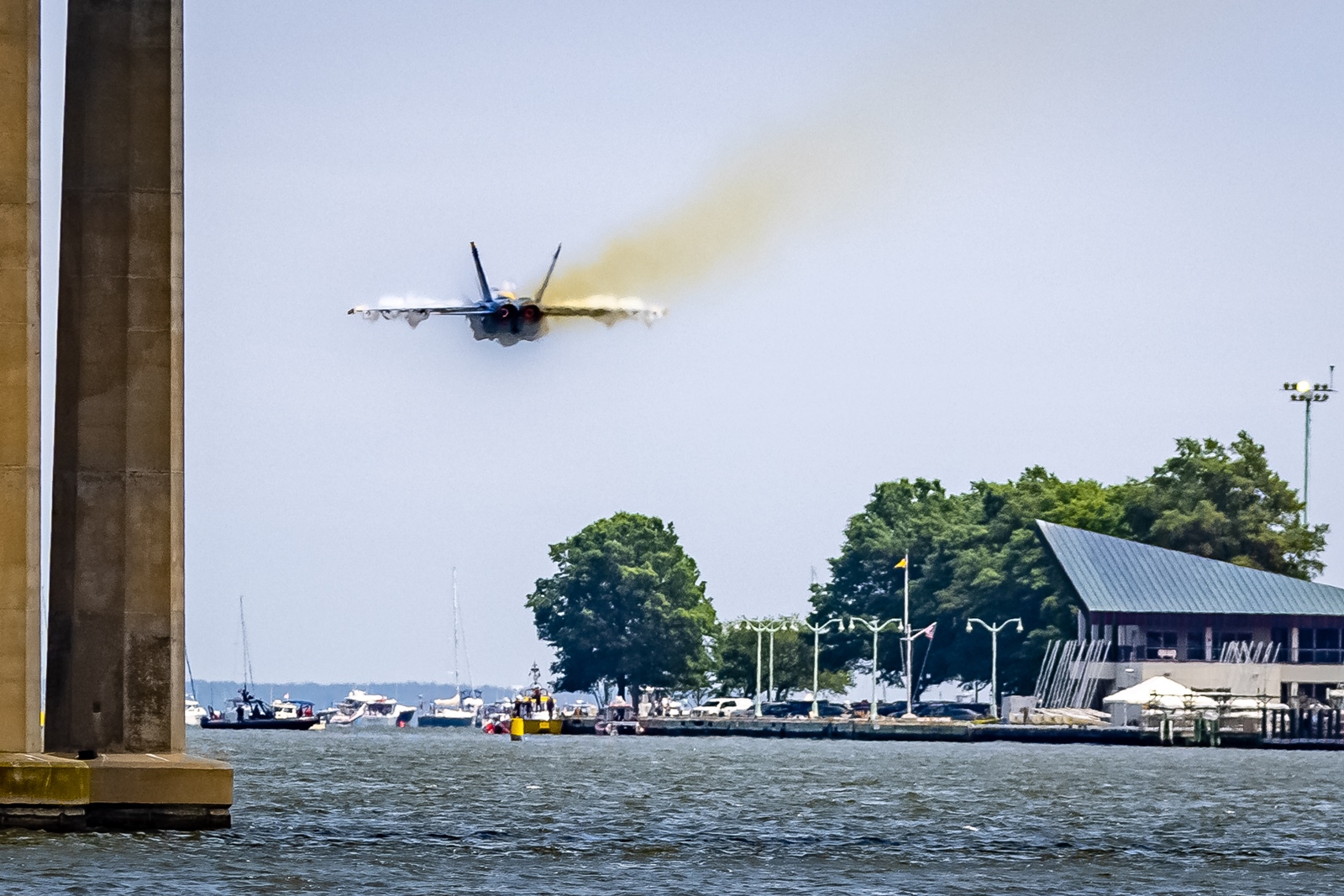
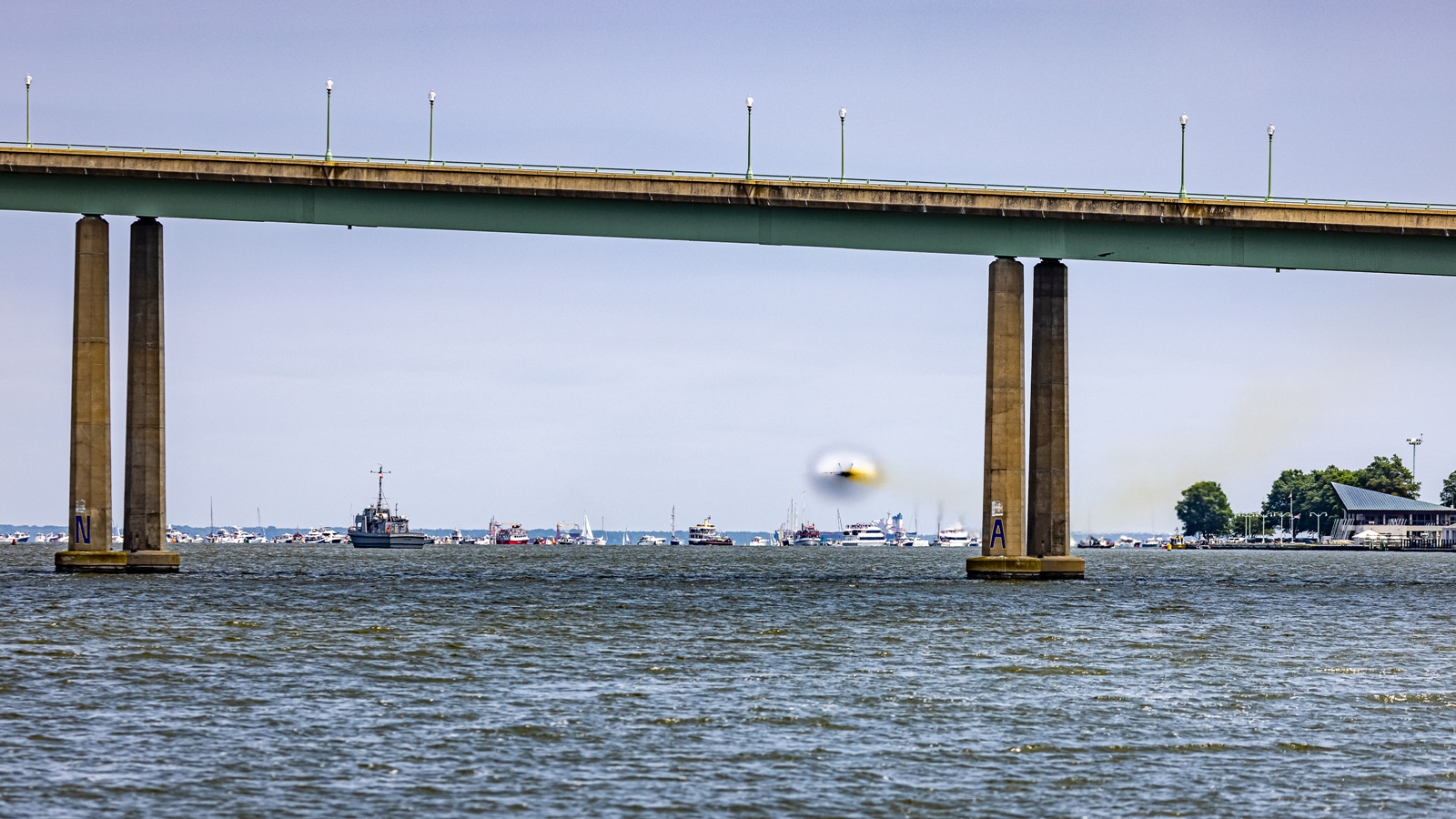
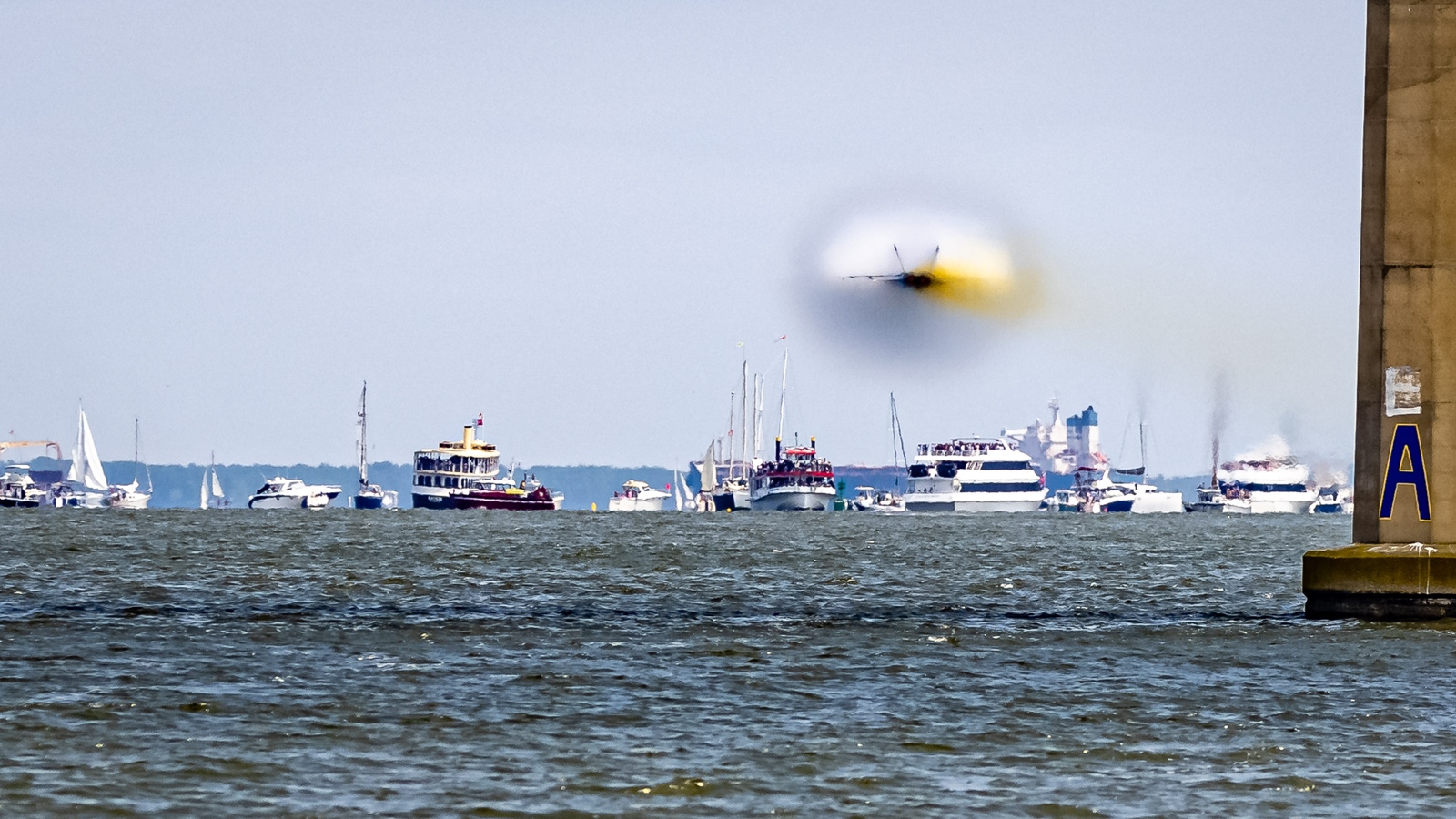
From the BBC article explaining what you see here:
It’s an eye-catching sight that
has been captured by photographers and camera crews time and again; a
military jet sweeps in low and fast, travelling at hundreds of miles an
hour. As it picks up speed, it begins to be surrounded by
a giant cone of vapour, a cloud that seems to erupt around the
aircraft.
That, we’re often told in excitable captions, is a sonic boom.
Except, it isn’t – or at least,
not quite. What you’re seeing is a physical effect that takes place as
an aircraft approaches the speed of sound, but it’s not the sonic boom
itself.
The vapor cones are created by a
shockwave that is generated by the aircraft as it picks up speed. The
shock waves are the physical effects of the aircraft travelling so fast
through air. As the aircraft picks up speed, and approaches
the speed of sound – around 767mph (1,234km/h) at sea level –
shockwaves form around the aircraft. Across these shockwaves there is
‘discontinuity’ in the local air pressure and temperature. This causes
the air to lose its capacity to hold water and condensation
starts to form, creating the vapor cone.
“The
aircraft isn’t necessarily travelling faster than the speed of sound,
but the air travelling over the wing is accelerated and locally breaks
the sound barrier," says (Rod) Irvine, (the chairman of the Royal
Aeronautical Society's aerodynamics group).
Ultimately, he says, you need to
have the right climactic conditions – the kind of warm moist air that
aircraft operating off carriers can find easier than most. Then, get a
nearby cameraman who really knows what they’re doing and voila
– you’ve captured, on camera, the dramatic vapour cloud that so many of
us think is the split-second spectacle of a sonic boom
Some of Don's earlier photos
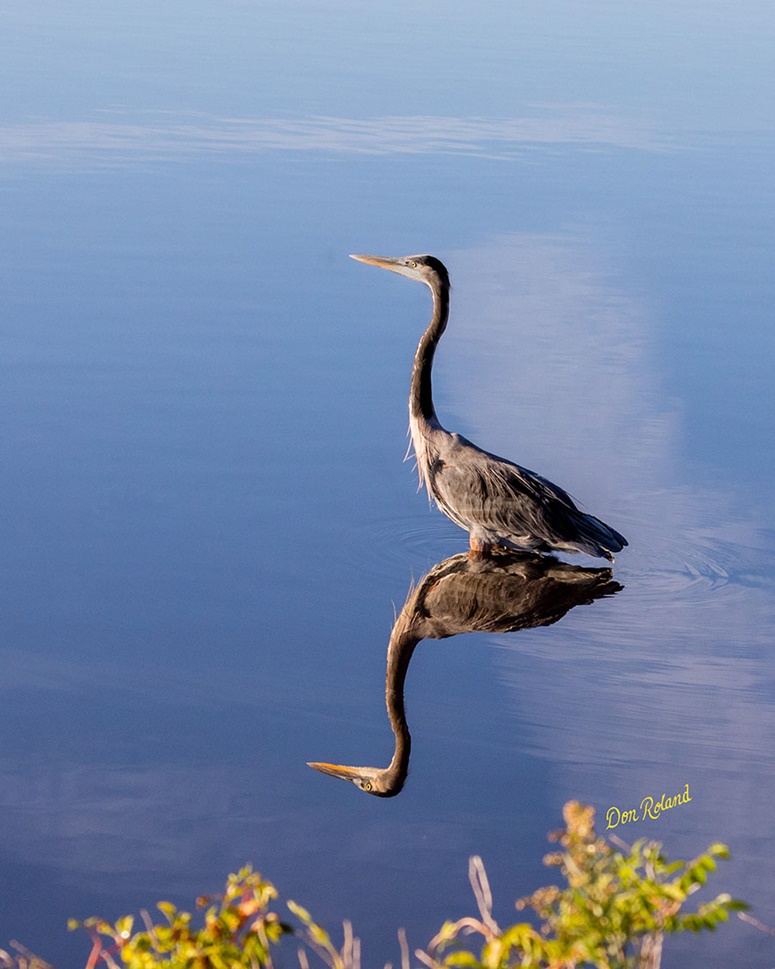 This photo, entitled "Perfect Reflection," was published in the Annapolis Capital in February, 2019.
This photo, entitled "Perfect Reflection," was published in the Annapolis Capital in February, 2019.
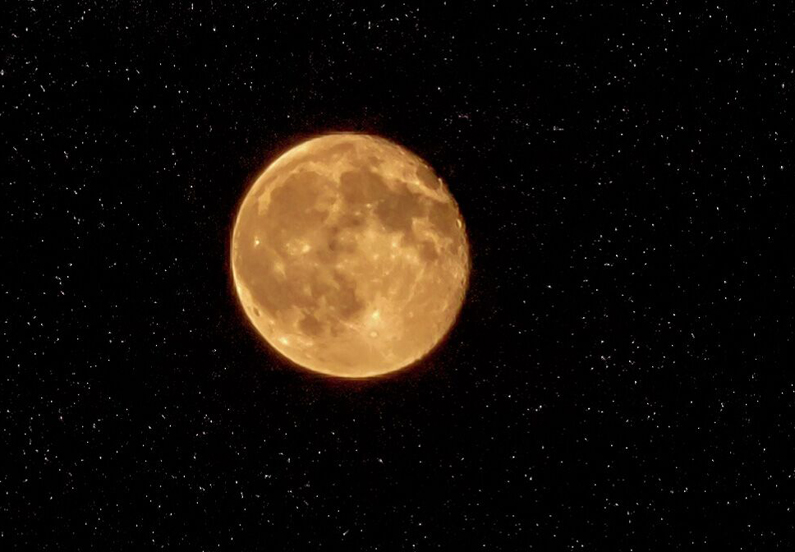
Here is an image unlike almost anything else taken from Don's home--or
anywhere else on the surface of the Earth. It was taken on Aug. 1,
2015--the night after a "blue moon." Here is his description of how
he created this view of the moon and so many faint stars behind it.
"(This) photo is at full night at 10:45 pm. The moon cleared the
cloud cover. To photograph the surface of the moon, I needed to reduce
exposure to 1/25 of a second and use the camera’s smallest aperture f/32.
I used my 200 mm telephoto lens to capture the details on the surface of
the moon and used the Lightroom raw processor to bring out the stars in
the background. I then cropped this area you see from the full frame raw
image. (1/25 second at f/32 ISO 1600)." (Editor's note: to
make the stars more visible on a web page only 800 pixels wide, the photo
has been cropped even more than Don's original.)
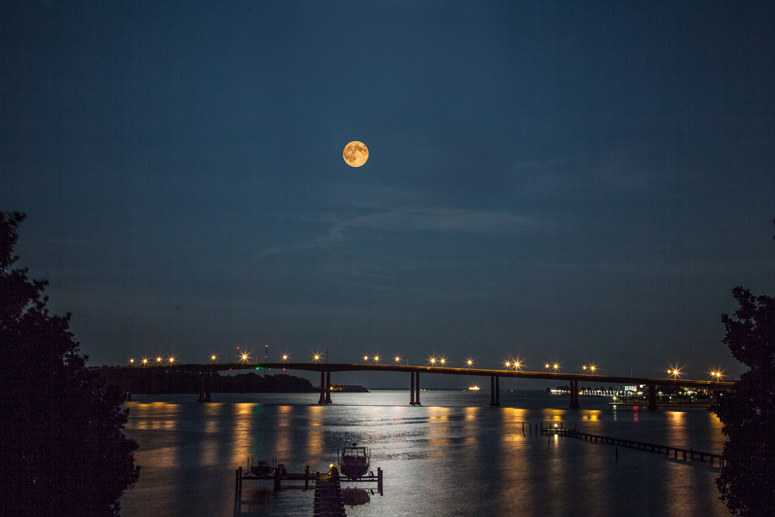 This
photo is actually a composite of two separate images. One is a short
exposure to capture the detail of the moon itself; the second is a much
longer exposure to capture the bridge, buildings and the bay. A single
image would not record what the human eye sees. It would either have
the moon's detail washed out or lose the detail of the bay, bridge and
buildings. For the progression of Don's work, see the image immediately
below this one.
This
photo is actually a composite of two separate images. One is a short
exposure to capture the detail of the moon itself; the second is a much
longer exposure to capture the bridge, buildings and the bay. A single
image would not record what the human eye sees. It would either have
the moon's detail washed out or lose the detail of the bay, bridge and
buildings. For the progression of Don's work, see the image immediately
below this one.
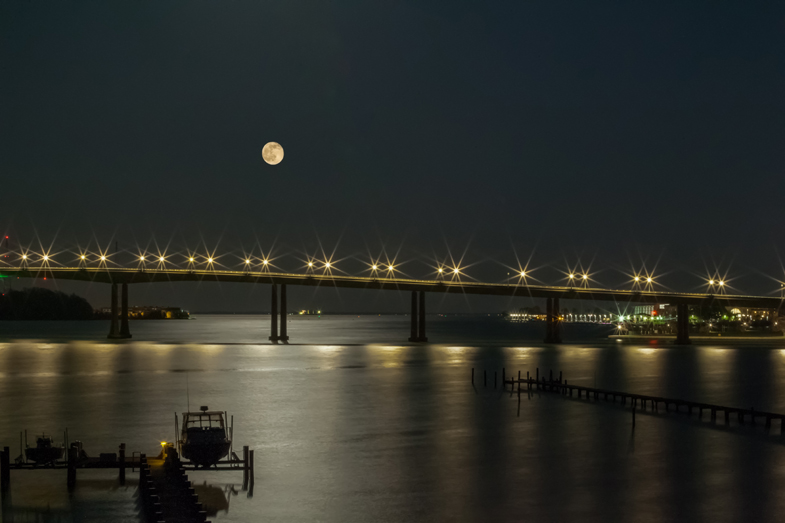
In
this photo, added to the web page in May, 2015, Don combined six
different images digitally to produce one image of this quality.
A web page only 800 pixels wide cannot begin to do justice to this kind
of image. It really belongs in a gallery as a high-resolution print.
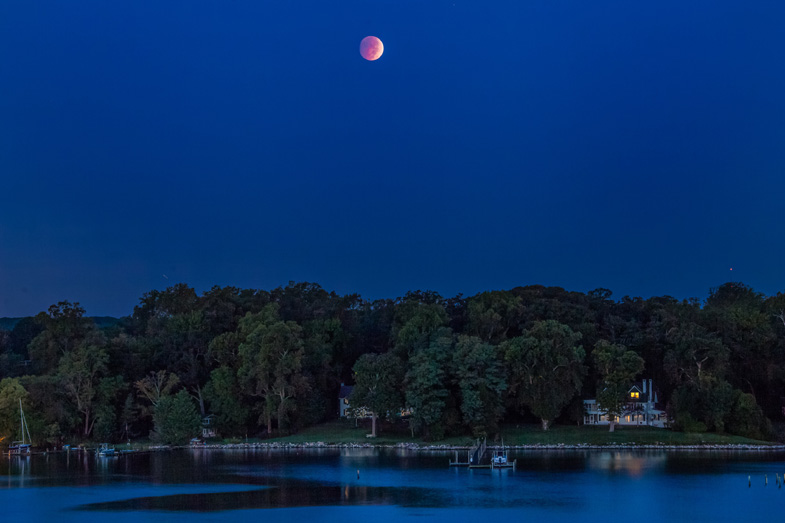 Don
captured the October, 2014 lunar eclipse in this photo. This is single
photograph, not a composite of two separate images. This image could be
taken in a single shot because the eclipse significantly darkened the moon.
Don
captured the October, 2014 lunar eclipse in this photo. This is single
photograph, not a composite of two separate images. This image could be
taken in a single shot because the eclipse significantly darkened the moon.

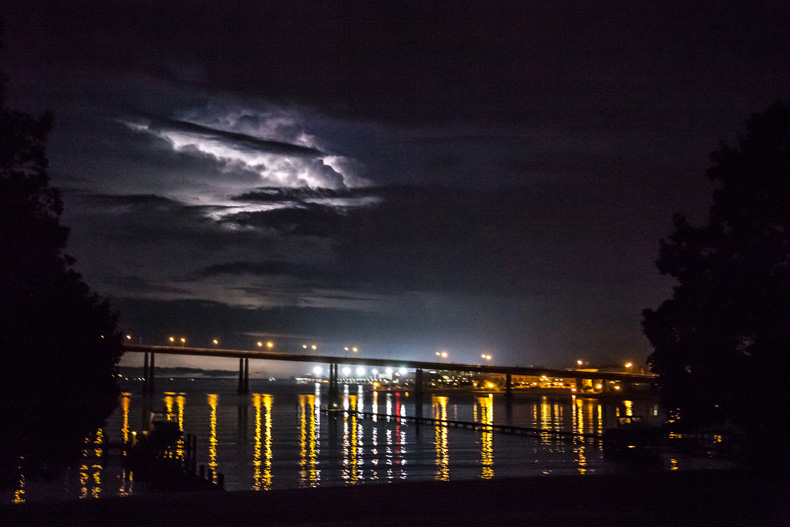
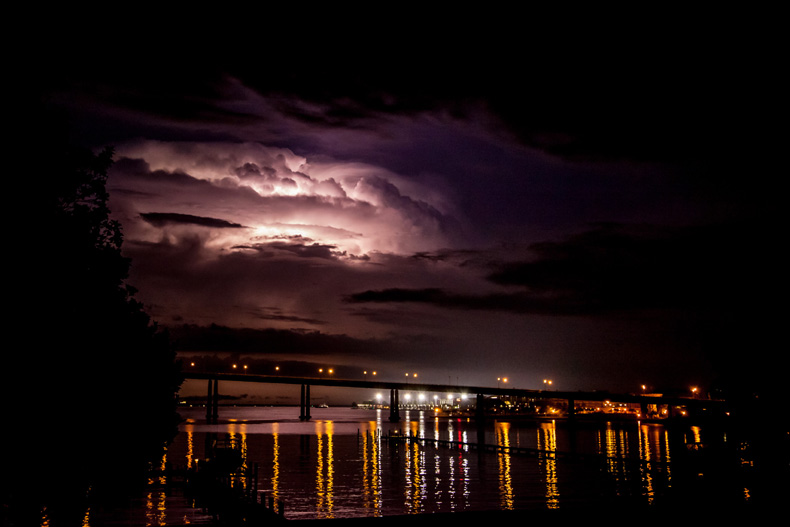
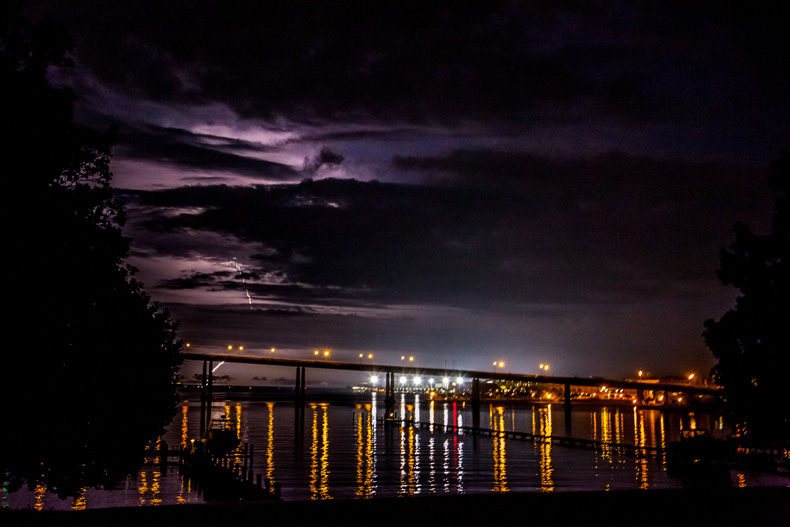
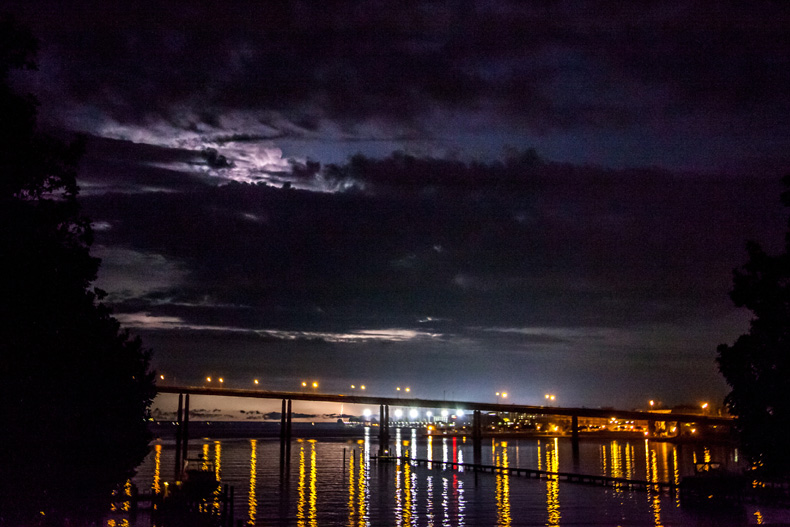
Yes,
that IS lightning in photos above. If you think it wouldn't be difficult
to capture lightning in a photographic image, try it sometime...
.
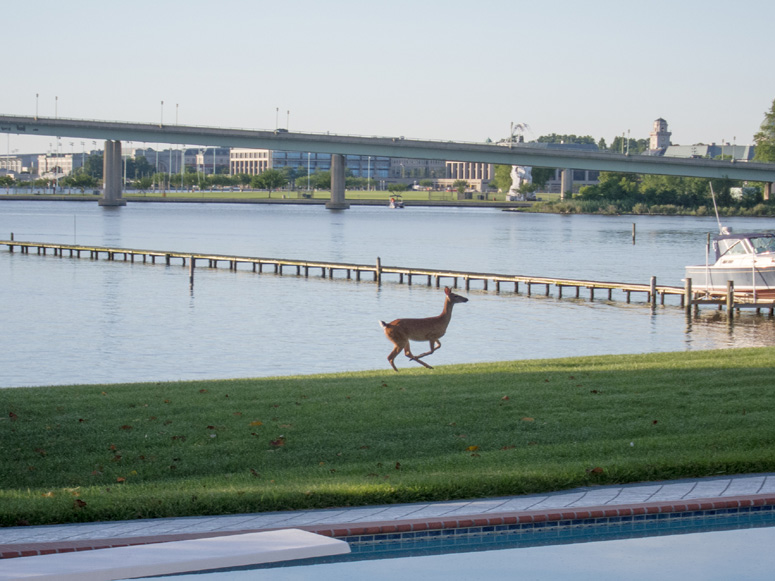 In
this photo Don caught a deer running across the lawn of his bayfront home.
The buildings beyond the bridge are on the U.S. Naval Academy campus.
In
this photo Don caught a deer running across the lawn of his bayfront home.
The buildings beyond the bridge are on the U.S. Naval Academy campus.
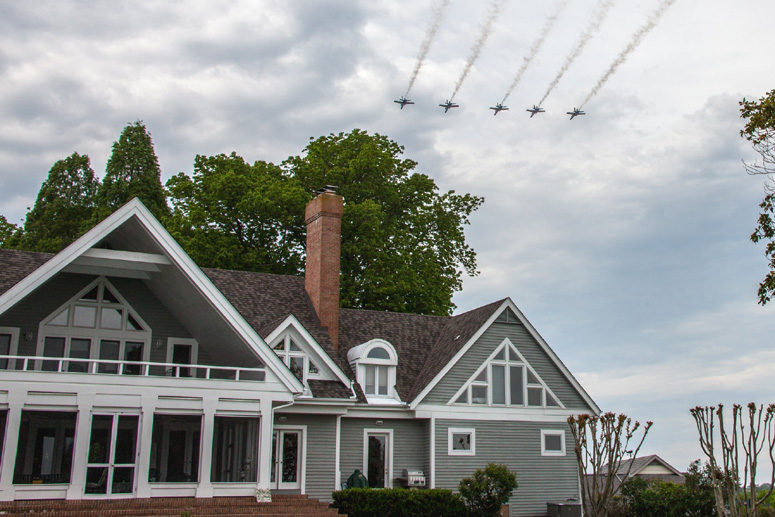
Here
are the U.S. Navy Blue Angels flying over Don's house.
|














